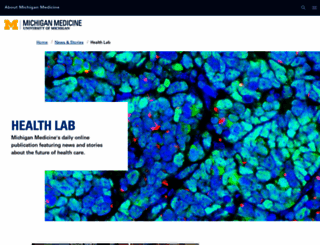Health Lab | Michigan Medicine
Page Load Speed
2.4 sec in total
First Response
57 ms
Resources Loaded
595 ms
Page Rendered
1.8 sec

About Website
Welcome to healthblog.uofmhealth.org homepage info - get ready to check Health Blog Uofm best content for United States right away, or after learning these important things about healthblog.uofmhealth.org
Shaping and sharing the future of health. Innovation from Michigan Medicine and beyond.
Visit healthblog.uofmhealth.orgKey Findings
We analyzed Healthblog.uofmhealth.org page load time and found that the first response time was 57 ms and then it took 2.4 sec to load all DOM resources and completely render a web page. This is quite a good result, as only 45% of websites can load faster.